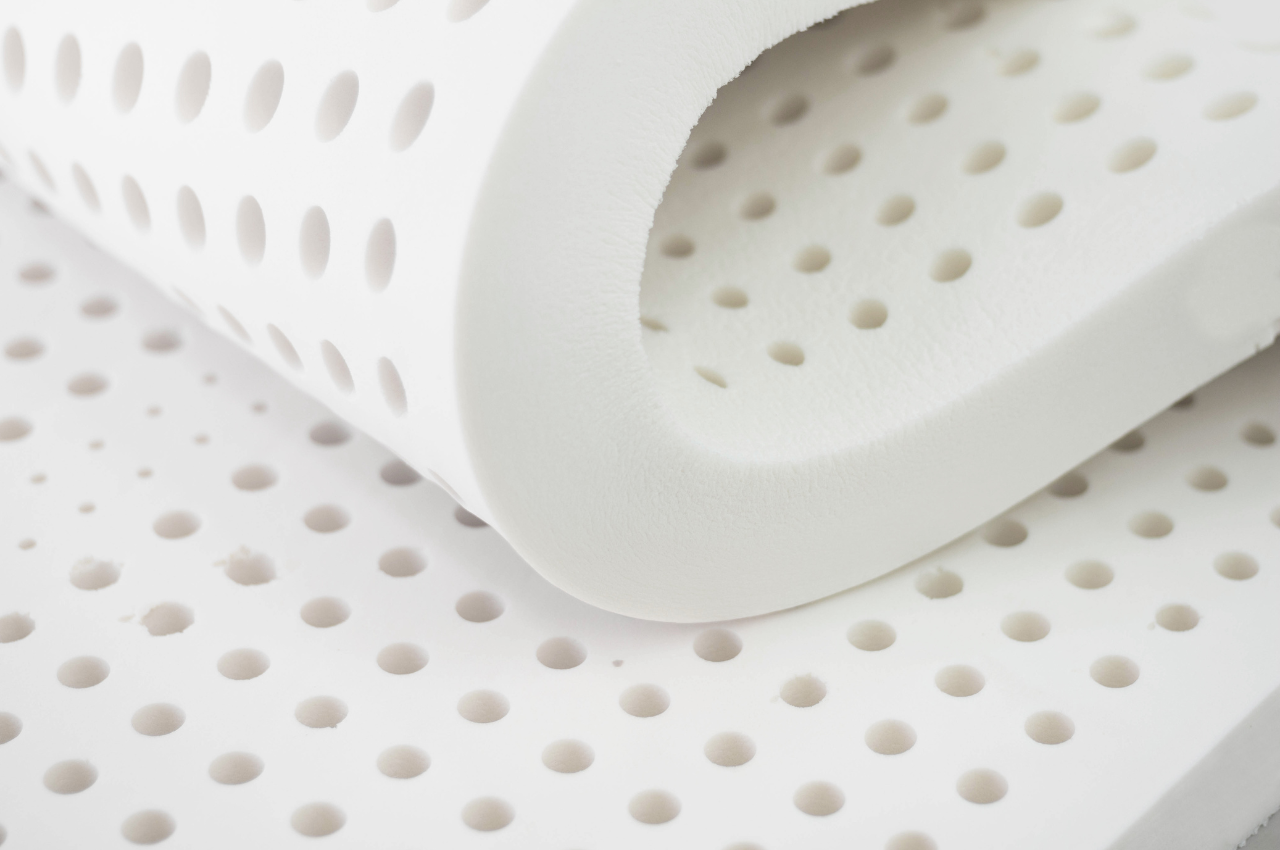All we want from a mattress is to be comfortable and supported. But sometimes, looking for one can be overwhelming, especially when encountering a serious barrage of unfamiliar jargon and features. Shopping for a mattress need not be complicated, though. There are only a few things you need to get acquainted with the mattress landscape, among them: latex and memory foam.
Both latex and memory foam promise supportive comfort as you sleep, but they go about it in different ways. How? Understanding how each component works and the benefits you can enjoy from them can make all the difference in choosing the mattress that suits you best.
Let’s explore what sets latex and memory foam apart.
What is in Latex Foam?
Latex mattresses offer a springy, responsive feel that’s often described as “lifting” rather than “hugging” your body. The bouncy feel is attributed to the elastic material, latex, which is made from the milky sap of the rubber tree, commonly sourced from the species Hevea brasiliensis. The sap is tapped and then processed into foam using one of two main methods:
- The Dunlop process is the original method, which involves whipping the sap into a froth, filling a mold in one go, and then baking it. This produces a denser and firmer foam that’s heavier at the bottom.
- The Talalay process is more complex. Like the older method, the sap is whipped into foam and poured into a mold, but this time, only partially. Then, it’s vacuum-sealed and flash-frozen before baking. This results in a lighter and airier foam with a consistent and well-distributed density. It feels softer and more buoyant.
However, you’ll find other types of latex foam on the market. The original methods focused on producing 100% latex foams, but blended versions have emerged to reduce costs and create varying firmness options. It’s quite common to see a mix of 30% natural latex and 70% synthetic foam in latex mattresses these days.
At the other end of the spectrum is synthetic latex. The cheaper a latex foam is, the higher the chance that it’s 100% synthetic latex, which mimics the properties of natural latex but is made of petroleum-based materials.
What is Memory Foam?
Memory foam provides a “slow-melting” body-conforming feel. It responds to body heat and weight, gradually conforming under pressure and returning to its original shape once the pressure is gone. This feature allows memory foam to mold into your body’s contours–the better the quality, the more precisely it conforms to your body, without sinking.
Also known as viscoelastic polyurethane foam, memory foam is wholly synthetic, even in its earliest forms. NASA originally developed the material in the 1960s to improve cushions for astronauts. They were looking to design a new seat that offers better impact protection and comfort, especially for long flights.
Of course, today’s commercial memory foam has evolved. As the material is known to trap heat, manufacturers have continued to develop new variations to counter this. There’s gel-infused memory foam, which features cooling gel beads to help draw heat away from the body. Another version is open-cell memory foam, which has an internal structure that allows for better airflow.
Latex vs. Memory Foam

Image by Africa images via Canva
Feel
Latex offers a more springy feel. It adapts to your body’s contours but responds quickly to movement, giving it a bouncier, more “on-the-mattress” experience. On the other hand, memory foam molds into your body’s shape with more precision and takes a moment to “bounce” after you move.
Support
Both materials support the body, but in different ways. Memory foam cushions pressure points on the shoulders, hips, and knees, because it molds to the body’s contours. Latex foam gives a more responsive support through a gentle lift that helps maintain proper spine alignment.
Breathability
Natural latex is inherently breathable. The material encourages airflow and dissipates heat more effectively, which keeps the foam at a neutral temperature. Memory foam tends to absorb body heat, but newer models are equipped with features to help improve airflow and cooling.
Durability
A high-quality memory foam mattress can last 7 to 10 years before it deteriorates and shows signs of wear, like sagging or body impressions. It also tends to sag more quickly with heavier sleepers. Natural latex is exceptionally durable and sees more years of use, 15 years or more.
Eco-Friendliness
Natural latex is the more eco-friendly option as it comes from the sap of rubber trees, and can be processed with fewer chemicals if needed. In contrast, memory foam is entirely synthetic and made from petroleum-based chemicals.
Cost and Availability
Memory foam mattresses are widely accessible and come in a broad range of prices. On the other hand, natural latex mattresses are costly upfront. The higher the percentage of natural latex in the mattress, the more limited and expensive it likely is. It can end up more cost-effective over time, though, thanks to its durability.
Which Makes the Better Mattress?
So, between latex and memory foam, which makes the better mattress? The truth is, there’s no one answer because people’s needs are too diverse. What’s best for you largely depends on your condition and priority.
In any case, choose latex if you’re a hot sleeper and prefer a springy, responsive, and non-sink feel in a mattress. This is also the safer bet if you prioritize long-term investment and eco-friendly materials. However, if you want a contouring hug and pressure relief as you sleep, then go for a memory foam mattress. It’s also the more affordable option if you’re working on a moderate budget.
***
Can’t decide? Need help in choosing a mattress? Get an appointment with us. Our team will be happy to show you our organic mattress collection. Visit us in person so you can test the mattress and determine, with expert guidance, which custom details and accessories you need to make your sleep better.
Related Posts
- Tips for Better Sleep: 8 Ways to Make Your Bedroom Fit for Sleep
- Experience Comfort with Stressless® by Ekornes
- Why You Don’t Have to Live in Columbus, Ohio, to Buy Furniture from T.Y. Fine Furniture
Featured by nespix from Getty Images via Canva



Leave a comment
This site is protected by hCaptcha and the hCaptcha Privacy Policy and Terms of Service apply.